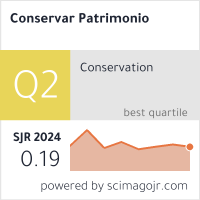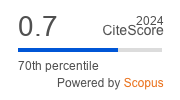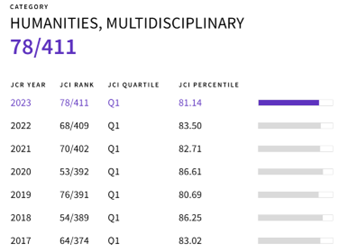Earth mortars stabilization: a review
DOI:
https://doi.org/10.14568/cp2019043Keywords:
Binders, Clay minerals, Susceptibility to water, Stabilizers, Plasters and rendersAbstract
Earth as a building material has been gaining a renewed interest due to current environmental and eco-efficiency concerns. Indeed, earth is an ecological and economically efficient material that can also contribute to increase indoor comfort. However, earth mortars have a limitation: their susceptibility to water. In order to implement a more comprehensive use in indoor and outdoor environments, where there may be contact with water, the inclusion of stabilizing agents has been studied. This article presents a critical literature review of the effect of the most common stabilizers used in earth mortars, specifically: vegetable fibres; binders such as calcium sulfates, air limes and limes with hydraulic properties, cement; and oils. It appears that some of these stabilizers seem to improve the earth mortars resistance to liquid water. However, in most cases, this improvement occurs at the expense of other important properties, which are also discussed.
Downloads
References
[1] Çamurcuoğlu, D., ‘The Wall Paintings of Çatalhöyük (Turkey): Materials, Technologies and Artists’, dissertação de Doutoramento, Institute of Archaeology, University College London, London (2015).
[2] Rao, K., ‘Foreword’, in World Heritage Papers 36: Earthen Architecture in today’s world, ed. L. Eloundou, T. Joffroy, UNESCO, Paris (2013) 7-8.
[3] Gandreau, M. D.; Joffroy, M. T., ‘Inventaire 2012 des biens en terre du patrimoine mondial’, in World Heritage Papers 36: Earthen Architecture in today’s world, ed. L. Eloundou e T. Joffroy, UNESCO, Paris (2013) 228-231.
[4] Gomes, M. I.; Diaz Gonçalves, T.; Faria, P., ‘Hydric behaviour of earth materials and the effects of their stabilization with cement or lime: Study on repair mortars for historical rammed earth structures’, Journal of Materials in Civil Engineering 28 (7) (2016), https://doi.org/10.1061/%28ASCE%29MT.1943-5533.0001536.
[5] Jaquin, P., ‘History of earth building techniques’, in Modern Earth Buildings: Materials, engineering, construction and applications, ed. M. R. Hall, R. Lindsay e M. Krayenhoff, Woodhead Publishing, Cambridge (2012) 307-323, https://doi.org/10.1533/9780857096166.3.307.
[6] Gomes, M. I.; Faria, P.; Diaz Gonçalves, T., ‘Earth-based mortars for repair and protection of rammed earth walls. Stabilization with mineral binders and fibers’, Journal of Cleaner Production 172 (2018) 2401-2414, https://doi.org/10.1016/j.jclepro.2017.11.170.
[7] Lima, J.; Ferreira, M.; Faria, P., ‘Rebocos de terra: caracterização higroscópica e face à presença de água líquida’, in Actas do Congresso da Reabilitação do Património, ed. A. Costa, A. Velosa e A. Tavares, Universidade de Aveiro, Aveiro (2017) 21-29.
[8] Sousa, V.; Meireles, I.; Almeida, N.; Brito, J., ‘Construções em terra: Principais anomalias e mecanismos de degradação’, in 4º Encontro Internacional sobre Patologia e Reabilitação de Edifícios, Universidade de Aveiro, Aveiro (2008).
[9] Bergaya, F.; Lagaly, G., ‘General Introduction: Clays, Clay Minerals and Clay Science’, in Handbook of Clay Science. Developments in Clay Science, 2ª ed., ed. E. Bergaya e G. Lagaly, Elsevier, Amsterdam (2013) 1-19, https://doi.org/10.1016/B978-0-08-098258-8.00001-8.
[10] Reddi, L. N.; Jain, A.; KYun, H-B., ‘Soil materials for earth construction; properties, classification and suitability testing’, in Modern Earth Buildings: Materials, Engineering, Constructions and Applications, ed. M. R. Hall, R. Lindsay e M. Krayenhoff, Woodhead Publishing Limited, Cambridge (2012) 155-171, https://doi.org/10.1533/9780857096166.2.155.
[11] Brigatti, M. F.; Galán, E.; Theng, B. K. G., ‘Structure and Mineralogy of Clay Minerals’, in Handbook of Clay Science. Developments in Clay Science, 2ª ed., ed. E. Bergaya e G. Lagaly Elsevier, Amsterdam (2013) 21-81, https://doi.org/10.1016/B978-0-08-098258-8.00002-X.
[12] Schoonheydt, R. A.; Johnston, C. T.; Bergaya, F., ‘Clay minerals and their surfaces’, in Surface and Interface Chemistry of Clay Minerals. Developments in Clay Science, ed. R. Schoonheydt, C. T. Johnston e F. Bergaya, Elsevier, Amsterdam (2018) 1-21, https://doi.org/10.1016/B978-0-08-102432-4.00001-9.
[13] Dominguez, O. M., “Preservation and repair of rammed earth constructions” dissertação de Mestrado, Universidade do Minho (2015).
[14] Schoonheydt, R. A.; Johnston, C. T., ‘The surface properties of clay minerals’, in Layered mineral structures and their Application in Advanced Technologies, ed. M.F. Brigatti e A. Mottana, The Mineralogical Society of Great Britain and Ireland, Twickenham (2011) 337-373, https://doi.org/10.1180/EMUnotes.11.10.
[15] Schoonheydt, R. A.; Johnston, C. T., ‘Surface and interface chemistry of clay minerals’, in Handbook of Clay Science. Developments in Clay Science, 2ª ed., ed. E. Bergaya e G. Lagaly, Elsevier, Amsterdam (2013) 139-172, https://doi.org/10.1016/B978-0-08-098258-8.00005-5.
[16] Santos, T.; Nunes, L.; Faria, P., ‘Production of eco-efficient earth-based plasters: Influence of composition on physical performance and bio-susceptibility’, Journal of Cleaner Production 167 (2017) 55-67, https://doi.org/10.1016/j.jclepro.2017.08.131.
[17] Camões, A.; Eires, R.; Jalali, S., ‘Old materials and techniques to improve the durability of earth buildings’, in Actas da conferência Terra 2012, International Committee on Vernacular Architecture – International Council on Monuments and Sites (CIAV-ICOMOS) (2012) 1–14.
[18] Eires, R.; Camões, A.; Jalali, S., ‘Ancient materials and techniques to improve the earthen building durability’, Key Engineering Materials 634 (2015) 357-366, https://doi.org/10.4028/www.scientific.net/KEM.634.357.
[19] Eires, R.; Camões, A.; Jalali, S., ‘Enhancing water resistance of earthen buildings with quicklime and oil’, Journal of Cleaner Production 142 (2017) 3281-3292, https://doi.org/10.1016/j.jclepro.2016.10.141.
[20] Zhang, L.; Yang, L.; Petter Jelle, B.; Wang, Y.; Gustavsen, A., ‘Hygrothermal properties of compressed earthen bricks’, Construction and Building Materials 162 (2018) 576-586, https://doi.org/10.1016/j.conbuildmat.2017.11.163.
[21] Santos, T.; Faria, P.; Santos Silva, A., ‘Avaliação in situ do comportamento de rebocos exteriores de argamassas de terra com baixas adições de cais’, Conservar Património 26 (2017) 11-21, https://doi.org/10.14568/cp2016022.
[22] Gomes, M.I.; Faria. P.; Gonçalves, T.D., ‘Earth-based mortars for repair and protection of rammed earth walls. Stabilization with mineral binders and fibers’, Journal of Cleaner Production 172 (2018) 2401-2414, https://doi.org/10.1016/j.jclepro.2017.11.170.
[23] Lima, J.; Silva, S.; Faria, P., ‘Rebocos de terra: influência da adição de óleo de linhaça e comparação com rebocos convencionais’, in Atas do 1º Congresso de Ensaios e Experimentação em Engenharia Civil, RELACRE , Lisboa (2016).
[24] Di Sante, M.; Fratalocchi, E.; Mazzieri, F.; Pasqualini, E., ‘Time of reactions in a lime treated clayey soil and influence of curing conditions on its microstructure and behaviour’, Applied Clay Science 99 (2014) 100-109, https://doi.org/10.1016/j.clay.2014.06.018.
[25] Zak, P.; Ashour, T.; Korjenic, A.; Korjenic, S.; Wu, W., ‘The influence of natural reinforcement fibers, gypsum and cement on compressive strength of earth brick materials’, Construction and Building Materials 106 (2016) 179-188, https://doi.org/10.1016/j.conbuildmat.2015.12.031.
[26] Ashour, T.; Korjenic, A.; Korjenic, S.; Wu, W., ‘Thermal conductivity of unfired earth bricks reinforced by agricultural wastes with cement and gypsum’, Energy and Buildings 104 (2015) 139-146, https://doi.org/10.1016/j.enbuild.2015.07.016.
[27] Mattone, M.; Rescic, S.; Fratini, F.; Manganelli Del Fà, R., ‘Experimentation of earth-gypsum plasters for the conservation of earthen constructions’, International Journal of Architectural Heritage 11(6) (2017) 763-772, https://doi.org/10.1080/15583058.2017.1290850.
[28] Lima, J.; Correia, D.; Faria, P., ‘Rebocos de terra: influência da adição de gesso e da granulometria da areia’, in III Simpósio de Argamassas e Soluções Térmicas de Revestimento, ITeCons, Coimbra (2016).
[29] Mattone, M.; Bignamini, E., ‘Conservation of earthen construction: Earth-gypsum plasters’, in Rammed Earth Conservation, ed. C. Mileto, F. Vegas e V. Cristini, Taylor and Francis Group, London (2012) 687-692.
[30] Ma, C.; Chen, B.; Chen, L., ‘Effect of organic matter on strength development of self-compacting earth-based construction stabilized with cement-based composites’, Construction and Building Materials 123 (2016) 414-423, https://doi.org/10.1016/j.conbuildmat.2016.07.018.
[31] Lima, J.; Faria, P., ‘Earthen Plasters: The potential of the clayey soils of Barrocal region in Algarve’, in 40th IAHS World Congress on Housing – Sustainable Housing Construction, Funchal (2014).
[32] Faria, P.; Lima J., Rebocos de Terra, Argumentum, Lisboa (2018).
[33] Lima, J.; Faria P., ‘Eco-efficient earthen plasters: The influence of the addition of natural fibers’, in Natural Fibers: Advances in Science and Technology Towards Industrial Applications, ed. R. Fangueiro e S. Rana, RILEM Book Series, Vol. 12, Springer, Basingstoke (2016) 315-330.
[34] Varas, M. J.; Alvarez de Buergo, M.; Fort, R., ‘Natural cement as the precursor of Portland cement: Methodology for its identification’, Cement and Concrete Research 35 (2005) 2055-2065, https://doi.org/10.1016/j.cemconres.2004.10.045.
[35] van Oss, H. G.; Padovani, A. C., ‘Cement manufacture and the environment – Part 1: Chemistry and technology’, Journal of Industrial Ecology 6(1) (2002) 89-105, https://doi.org/10.1162/108819802320971650.
[36] EN 459-1. 2015. Building lime – Part 1: Definitions, specifications and conformity criteria. CEN, Brussels.

Downloads
Published
How to Cite
License
This work is distributed under a Creative Commons Attribution License (CC BY-NC-ND 4.0) which permits use, distribution, and reproduction in any medium following no commercial or derivatives, provided the original author and source are credited.
Copyright remains with the authors.






